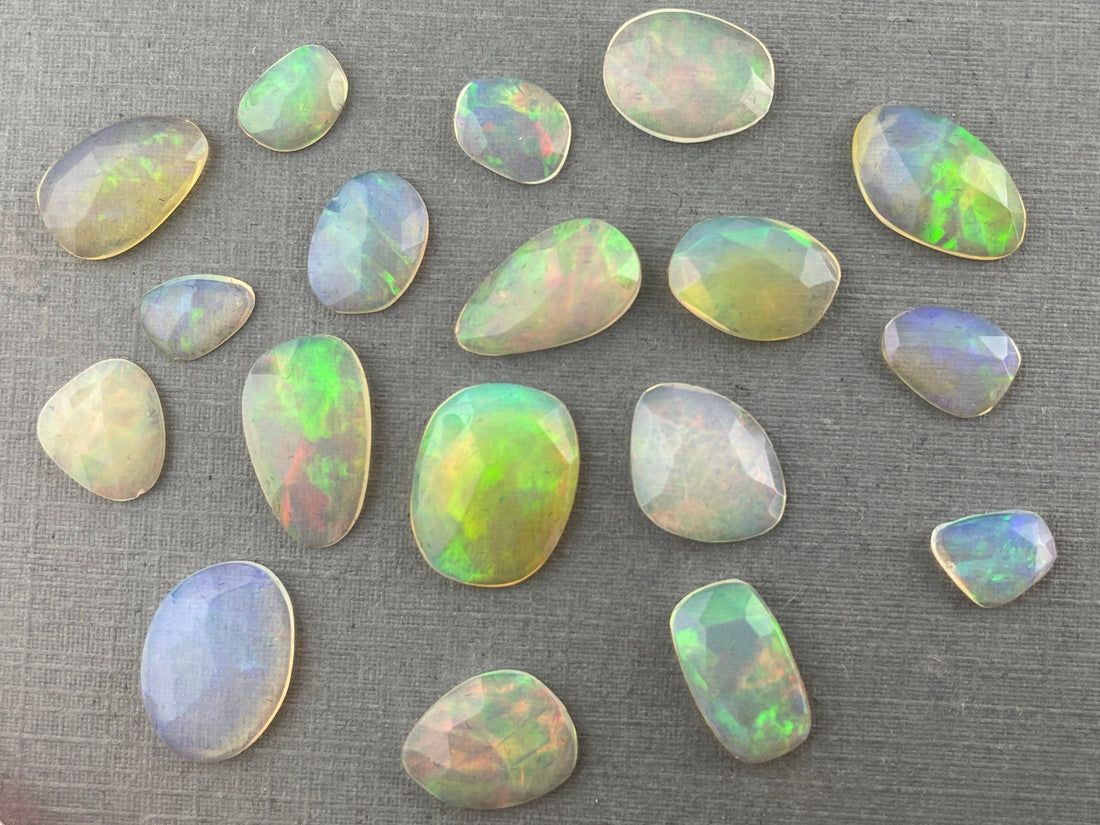
What Is a Rose Cut Cabochon?
Share
Rose cut cabochons are a unique style of gemstone cut that combines features of both traditional cabochons and faceted stones. Unlike standard cabochons, which typically have a smooth, domed surface and a flat back, rose cut cabochons maintain the flat back but feature a faceted top. These facets are usually triangular or kite-shaped and arranged in a symmetrical pattern, resembling the petals of a rose—hence the name "rose cut."
This cutting style enhances the stone's ability to reflect light, giving it a subtle, elegant sparkle that differs from the brilliant shine of fully faceted gemstones. Rose cut cabochons are often crafted in freeform shapes, allowing for unique and organic designs that highlight the natural beauty of the gemstone. However, they are also available in calibrated sizes, which are standardized dimensions.
The origin of rose cut cabochons dates back to the 16th century, during the Renaissance period in Europe. This gemstone cutting style was inspired by the natural shape of a rosebud, with its domed top and flat base, creating a soft, romantic appearance. The design became especially popular in the Georgian and Victorian eras, where jewelers favored its ability to enhance the understated brilliance of diamonds and colored gemstones without the complexity of modern faceting techniques.
Rose cut cabochons were initially hand-cut, showcasing artisans' skills with simple tools, which resulted in unique, organic forms. The style allowed for maximum light reflection with fewer facets, typically arranged in concentric triangular patterns, giving the stones their signature gentle sparkle. Though their popularity waned with the advent of the brilliant cut in the 18th century, rose cut cabochons have experienced a resurgence in contemporary jewelry for their vintage charm and distinctive elegance.
